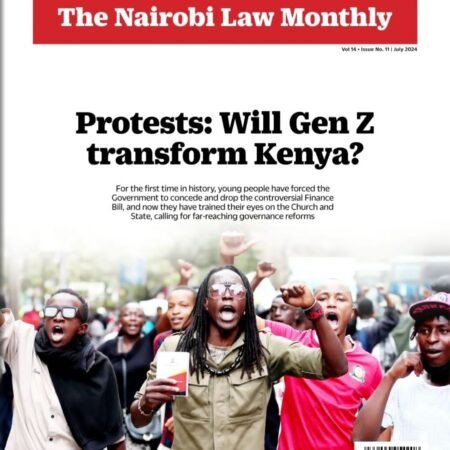By Nadrat Mazrui
The recent decision by the UK to leave the European Union has led other countries in the block to rethink their membership. There have been recent whispers about a Dutch exit, and frenzied talk that Italy could follow the lead of the UK. Far-right parties are said to want to capitalise on the momentum of the referendum victory on December 1, 2016, to call for Italy’s exit from the Eurozone in coming months.
-
Sale!
Download Nairobi Law Monthly Magazine July 2024 Edition
Downloads Original price was: KShs200.00.KShs100.00Current price is: KShs100.00.
“The Euro and Europe are not the same thing. We only want for Italians to decide on the currency,” Alessandro Di Battista, a party leader in Italy was quoted in media as saying. Repercussions of leaving the euro exist, which most economists believe would carry big risks for Italy and the global markets, but Di Battista says he “understood well the consequences of the introduction of the euro”. The single currency, he said, had shrunk Italians’ buying power and earnings, and caused higher unemployment and “social deprivation”.
An Italy exit from the Eurozone would be complicated. Italy’s constitution sets a high threshold for the country to abandon an international treaty via a popular vote. It would have to pass an amendment before calling a referendum, which would then require winning two-thirds majorities in both chambers of parliament. Even if a referendum passed, the issue could come up for review by the constitutional court. What is clear, however, is that the alarm bells have gone off.
Since Italy joined the Eurozone in 1999, it has had an average growth rate of less than 1 per cent, and so people do put two and two together and think this suggests that its place within the Eurozone is not a very good idea.
The anti-EU and anti-immigrant Northern League, a right-wing party, is also opposed to the Eurozone. “What we have seen lately is a constant focus on the EU and how it limits what Italy can do to handle the banking crisis, which is portrayed as having a negative impact on households,” said Federico Santi, an analyst.
The Euro is the official currency of the Eurozone, which is used by 19 out of the 28 member states of the European Union. The currency is also officially used by the institutions of the European Union and four other European countries. Outside of Europe, a number of overseas territories of EU members also use the euro as their currency.
The name Euro was officially adopted on December 16, 1995. The Euro was introduced to world financial markets as an accounting currency in January 1999, replacing the former European Currency Unit (ECU). Physical euro coins and banknotes entered into circulation in January 2002, making it the day-to-day operating currency of its original members; by May 2002, it had completely replaced the former currencies.
Eurozone
The Eurozone, officially called the euro area, is a monetary union of European Union (EU) member states that have adopted the euro as their common currency and sole legal tender. The monetary authority of the Eurozone is the Euro system. The other nine members of the European Union continue to use their own national currencies, although most of them are obliged to adopt the euro in future.
The single market (in fact called the “internal market” in the EU Treaties) is defined in Article 26(3) of the Treaty on the Functioning of the European Union (TFEU) as follows:
“The internal market shall comprise an area without internal frontiers in which the free movement of goods, persons, services and capital is ensured in accordance with the provisions of the Treaties”
The Single Market refers to the EU as one territory without any internal borders or other regulatory obstacles to the free movement of goods and services. A functioning Single Market stimulates competition and trade, improves efficiency, raises quality, and helps cut prices. The European Single Market is one of the EU’s greatest achievements. It has fuelled economic growth and made the everyday life of European businesses and consumers easier. It also seeks to guarantee the free movement of goods, capital, services, and people – the “four freedoms” – within the EU. The market encompasses the EU’s 28 member states, and has been extended, with exceptions, to Iceland, Liechtenstein and Norway through the Agreement on the European Economic Area and Switzerland through bilateral treaties.
The market is intended to be conducive to increased competition, increased specialisation, larger economies of scale, allowing goods and factors of production to move to the area where they are most valued, thus improving the efficiency of the allocation of resources. It is also intended to drive economic integration whereby the once separate economies of the member states become integrated within a single EU economy. Half of the trade in goods within the EU is covered by legislation harmonised by the EU. The creation of the internal market as a seamless, single market is an on-going process, with the integration of the service industry still containing gaps. It also has an increasing international element, with the market represented as one in international trade negotiations.
Even among many Italians who are opposed to continued EU membership, the single market is widely perceived as a positive feature of the European Union from the Italy perspective and from the business perspective. But it is not always well understood exactly what the single market consists of.
Although the “single market” is often viewed positively, it in fact consists of a number of different elements some of which are positive, some of which are more equivocal, and others of which are downright negatives. In this category is the fact that it requires Italy to impose sometimes-inappropriate tariffs, and prevents member states from negotiating own trade agreements. As well, the “Fortress Europe” regulatory restrictions against imports from non-EU countries damage consumers and drive up costs.
The mechanics of getting a referendum to leave the Eurozone is something else. There is a climate in Italy of growing euro scepticism and certainly anti-establishment feeling – that’s very clear. The implications for the EU specifically, I think, are probably less clear.” After Brexit it is clear that the domino effect has now begun.
It is likely that Europeans will ultimately choose individual countries with their own currencies instead of opting to join the United States of Europe.


